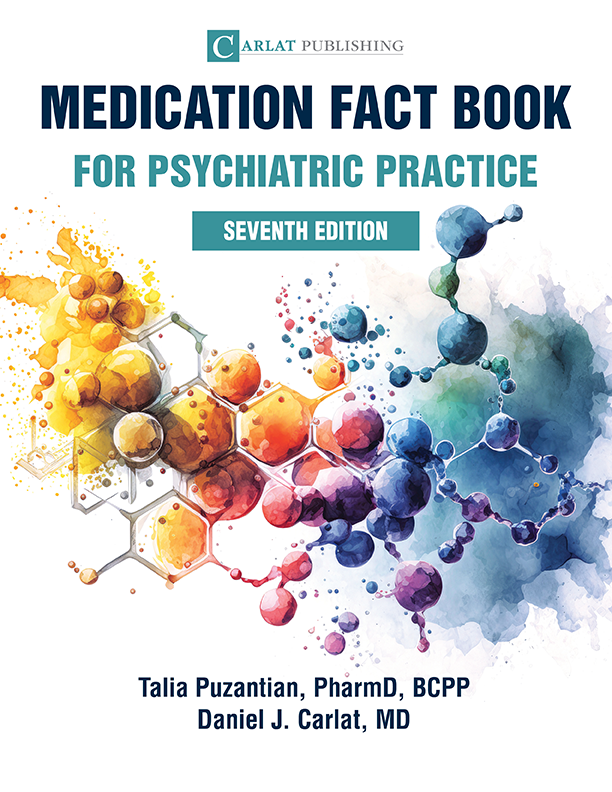Home » Drugs in the Pipeline: ALKS–5461
Drugs in the Pipeline: ALKS–5461
November 1, 2012
From The Carlat Psychiatry Report
Since our feature article on “New Antidepressants” in the May 2012 TCPR, you may have heard some buzz about yet another new antidepressant undergoing clinical trials, this one with the less-than-sexy name ALKS-5461. Some news outlets have promoted it as “revolutionary.” What exactly is it?
While most current antidepressants act on the monoamine neurotransmitters (serotonin, norepinephrine, dopamine), ALKS-5461 acts on the endogenous opioid system. It’s actually a combination of two drugs: buprenorphine and a compound called ALKS-33 or samidorphan. (“ALKS,” by the way, refers to Alkermes, the compound’s manufacturer.) You’re probably familiar with buprenorphine; it’s the essential component of Suboxone, the office-based opioid therapy for chronic opioid dependence (see TCPR May 2010, for a discussion of Suboxone). Buprenorphine is a partial agonist of the mu opioid receptor and full antagonist of the kappa receptor; ALKS-33, on the other hand, is a molecule that blocks buprenorphine’s effect on the mu receptor. The combination of buprenorphine and ALKS-33, therefore, should theoretically allow buprenorphine to bind to the kappa opioid receptor but not the mu receptor, thereby avoiding any euphoric effect—or addictive potential.
The ability of opioids to enhance mood has been known for centuries, so it’s no surprise that drug companies are turning to these compounds for their antidepressant properties. Several small studies have shown that buprenorphine can have an antidepressant effect (for a review, see Tenore PL, J Addict Dis 2008;27(3):49–65), but this compound is less than ideal because of its oral abuse potential (even when packaged with naloxone, as in Suboxone) and complicated withdrawal. Some evidence suggests that dynorphin, a natural brain peptide and pure agonist of the kappa receptor, is elevated in depression, so blocking the kappa receptor makes sense (see Knoll AT and Carlezon WA, Brain Res 2010;1314:56–73). The two-drug combination in ALKS-5461 is apparently designed to do just that: prevent mu receptor activation and allow buprenorphine to do its work by blocking the kappa receptor instead.
The efficacy of ALKS-5461 for depression remains to be seen. Some trials of ALKS-33 alone have already been performed, particularly in the areas of alcohol dependence and binge-eating disorder. These have been negative.
TCPR’S VERDICT: Only preliminary data on ALKS-5461 have been released thus far, and a phase II trial is currently under way. But before getting too excited, we should remind ourselves that opioids are not simple drugs. They may be misused, they can cause side effects ranging from constipation to respiratory depression, and they are frequently associated with an agonizing, prolonged withdrawal. It will be crucial to thoroughly evaluate the safety data of ALKS-5461 to determine whether the addition of a mu antagonist prevents withdrawal complications or abuse. And we should use extra caution before using existing compounds such as Suboxone or buprenorphine off label in our depressed patients without a full understanding of the risks involved.
General PsychiatryWhile most current antidepressants act on the monoamine neurotransmitters (serotonin, norepinephrine, dopamine), ALKS-5461 acts on the endogenous opioid system. It’s actually a combination of two drugs: buprenorphine and a compound called ALKS-33 or samidorphan. (“ALKS,” by the way, refers to Alkermes, the compound’s manufacturer.) You’re probably familiar with buprenorphine; it’s the essential component of Suboxone, the office-based opioid therapy for chronic opioid dependence (see TCPR May 2010, for a discussion of Suboxone). Buprenorphine is a partial agonist of the mu opioid receptor and full antagonist of the kappa receptor; ALKS-33, on the other hand, is a molecule that blocks buprenorphine’s effect on the mu receptor. The combination of buprenorphine and ALKS-33, therefore, should theoretically allow buprenorphine to bind to the kappa opioid receptor but not the mu receptor, thereby avoiding any euphoric effect—or addictive potential.
The ability of opioids to enhance mood has been known for centuries, so it’s no surprise that drug companies are turning to these compounds for their antidepressant properties. Several small studies have shown that buprenorphine can have an antidepressant effect (for a review, see Tenore PL, J Addict Dis 2008;27(3):49–65), but this compound is less than ideal because of its oral abuse potential (even when packaged with naloxone, as in Suboxone) and complicated withdrawal. Some evidence suggests that dynorphin, a natural brain peptide and pure agonist of the kappa receptor, is elevated in depression, so blocking the kappa receptor makes sense (see Knoll AT and Carlezon WA, Brain Res 2010;1314:56–73). The two-drug combination in ALKS-5461 is apparently designed to do just that: prevent mu receptor activation and allow buprenorphine to do its work by blocking the kappa receptor instead.
The efficacy of ALKS-5461 for depression remains to be seen. Some trials of ALKS-33 alone have already been performed, particularly in the areas of alcohol dependence and binge-eating disorder. These have been negative.
TCPR’S VERDICT: Only preliminary data on ALKS-5461 have been released thus far, and a phase II trial is currently under way. But before getting too excited, we should remind ourselves that opioids are not simple drugs. They may be misused, they can cause side effects ranging from constipation to respiratory depression, and they are frequently associated with an agonizing, prolonged withdrawal. It will be crucial to thoroughly evaluate the safety data of ALKS-5461 to determine whether the addition of a mu antagonist prevents withdrawal complications or abuse. And we should use extra caution before using existing compounds such as Suboxone or buprenorphine off label in our depressed patients without a full understanding of the risks involved.
KEYWORDS medical_comorbidities
Issue Date: November 1, 2012
Table Of Contents
Recommended
Newsletters
Please see our Terms and Conditions, Privacy Policy, Subscription Agreement, Use of Cookies, and Hardware/Software Requirements to view our website.
© 2025 Carlat Publishing, LLC and Affiliates, All Rights Reserved.


_-The-Breakthrough-Antipsychotic-That-Could-Change-Everything.jpg?1729532347)



